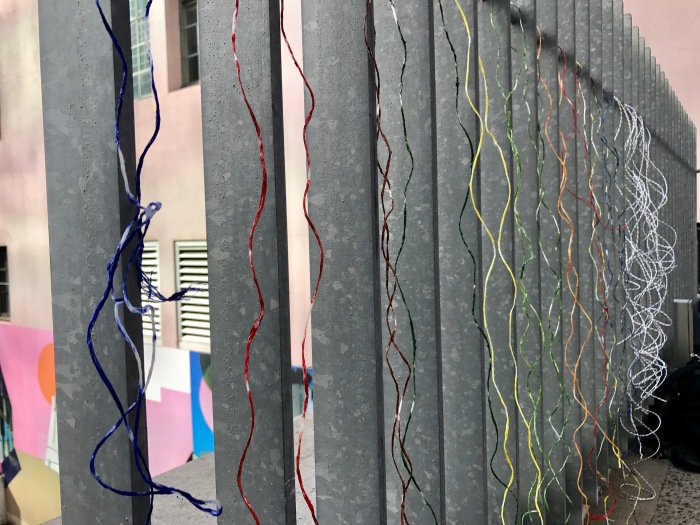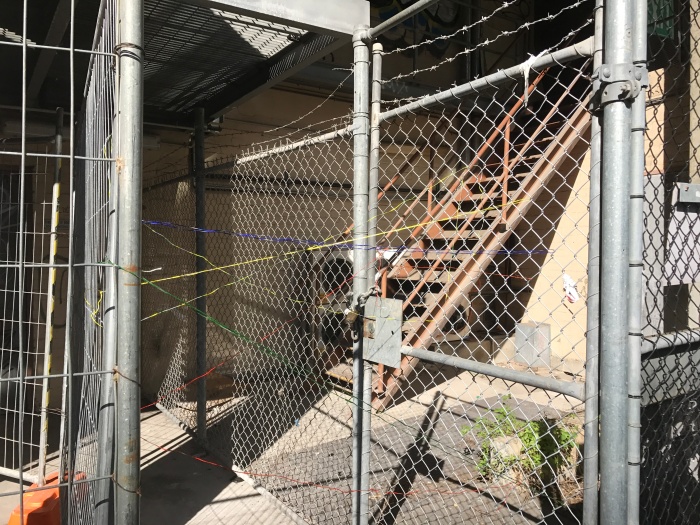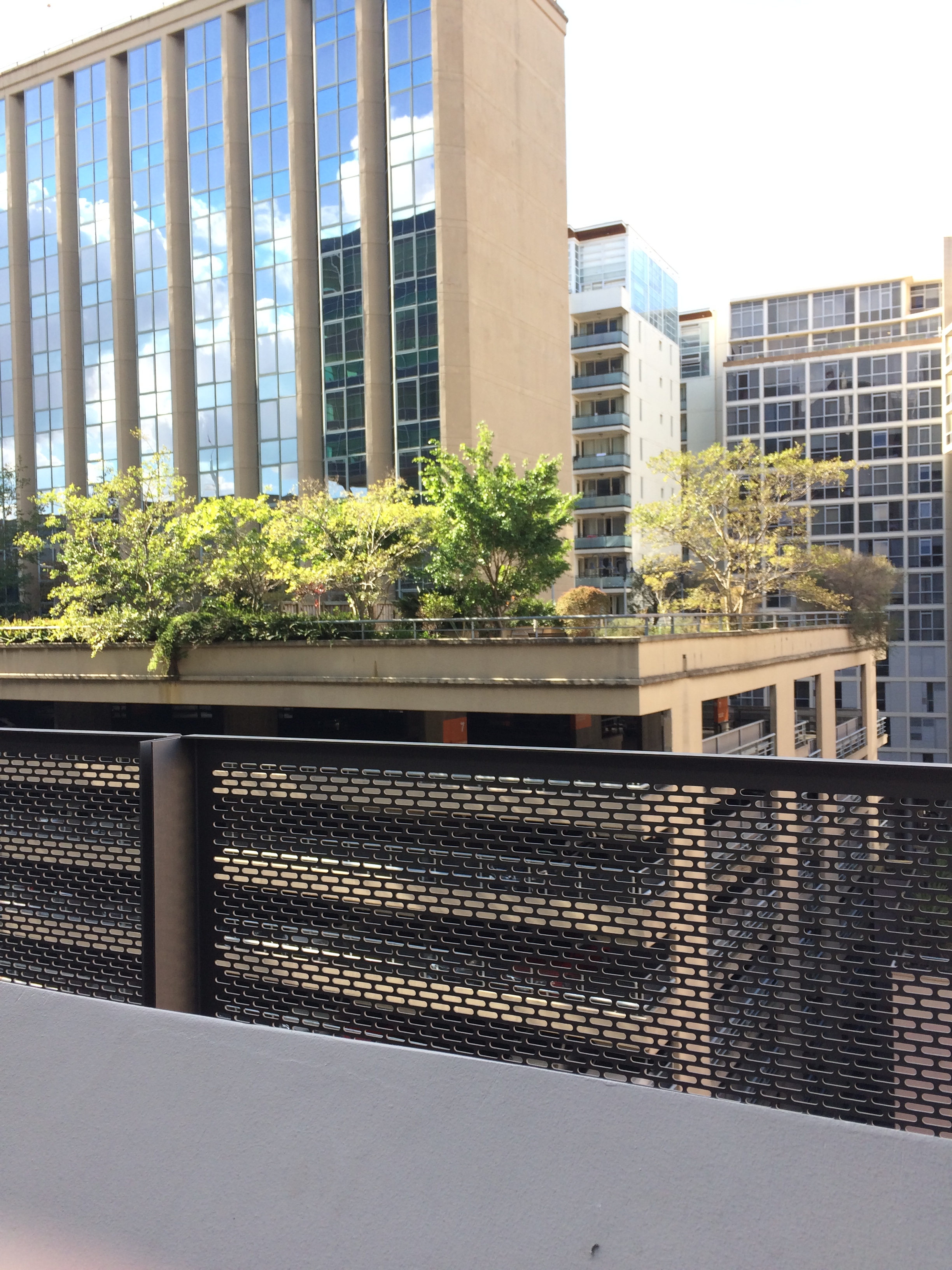In this subject I have developed and improved skills in using the editing software, Final Cut Pro. By using the program, we were able to collate film and photography and edit them in the way we wanted. I have also learnt different types of film techniques and the formal name for them as well as being able to use these techniques. Something I didn’t think I would learn in this subject was knot tying, which became helpful in our final video where we had to secure a number of strings to different spaces. When we had an idea of what we wanted to do, we came up with the question “What does it mean to suspend in space?”, we thought about different ways to suspend string and how to tie them. We all practiced half hitch knots across one arm of a chair to another, creating various string suspending in air across each other.
An interesting part of this project was location scouting where we went to areas such as rooftops and edges of carparks. Being able to do this while dangling, tying, unknotting string while by-passes perked their curiosity was amusing as they would stop and look at what we are doing. Being able to create something and on-lookers actually paying attention made it an interesting experience, to feel like you are creating for a purpose where people pay attention to an empty, unfilled gap was meaningful as we had the power to attract attention to something that had no significance.
Moving image production taught me that rather than picturing the final product of a video, we had to trust in the process and focus on it to create something meaningful yet abstract. Being able to work well in a group was due to constant communication and collaboration which played a large role on our team as a whole. We all had similar visions, met at suitable times and worked well together which I think is important as in the end we created something together. Although in the last week we had a problem to overcome where we had to decide whether or not we should remake our film to meet a higher standard. As a group we decided it was something we should do which made me think that we had to challenge and push ourselves as creatives to be able to achieve something we are more than satisfactory in.
























